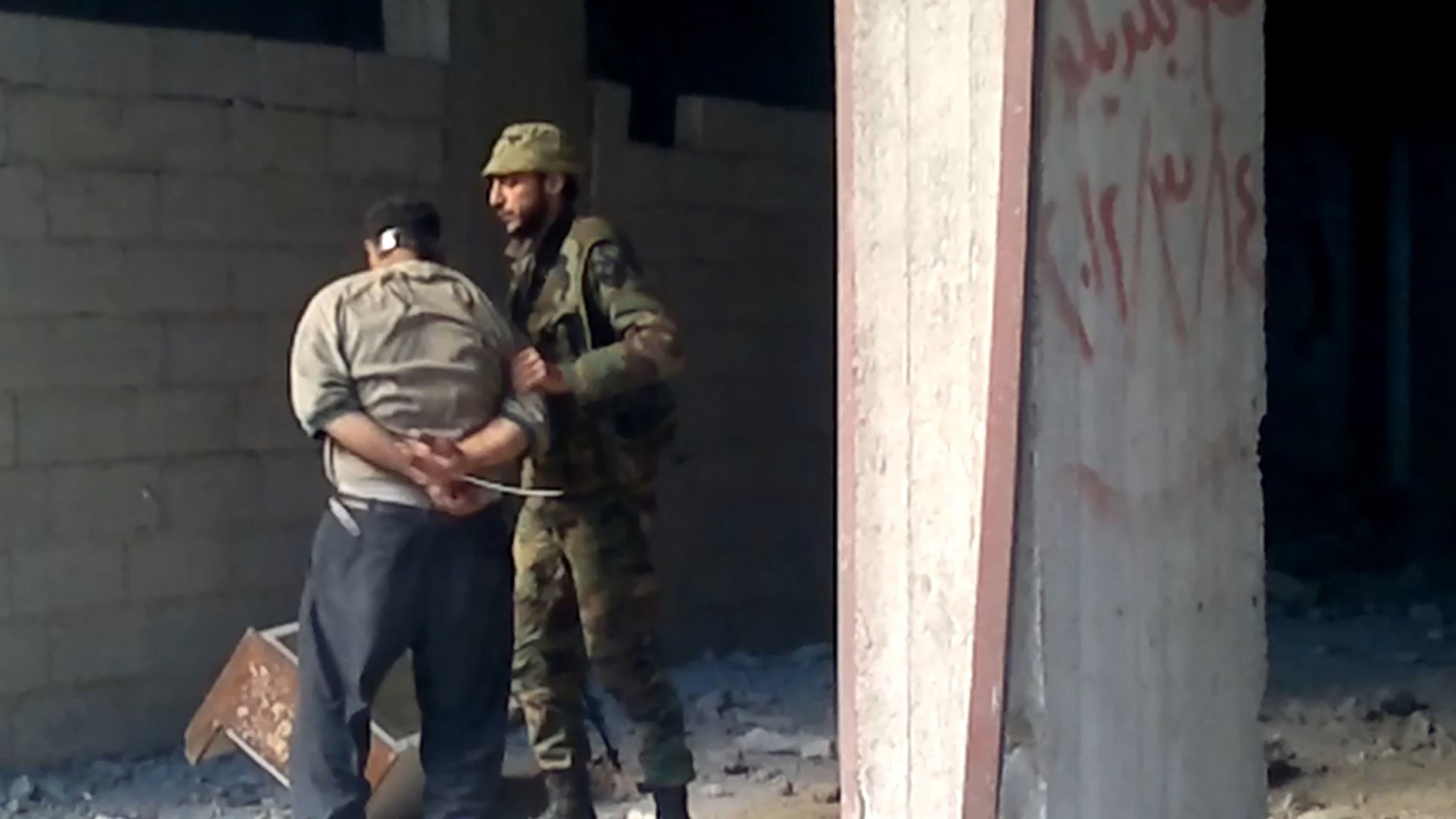It was a year or so into the war in Syria when I was sitting in my car as it idled, waiting my turn to clear the checkpoint ahead. In front of me a pickup truck full of armed shabiha (regime henchmen) dressed in civilian clothes also stood idling, waiting its turn.
Syria was already splintering into fragments; minds and hearts and families torn asunder as the violence around us escalated. Checkpoints became ubiquitous and dangerous, a place where people disappeared.
One of the men sitting in the back of the truck began to stare at me from his perch. It was an impulse perhaps, for humans cannot help but seek the gaze of other humans — or avert it when it threatens. I kept my gaze level and forward, my eyes hidden from view behind sunglasses and the car visor. But then he moved his Kalashnikov assault rifle a few inches downward and aimed it straight at my chest and smirked. It was a subtle and surreptitious move that none of his fellow shabiha noticed, for they were busy chatting and looking elsewhere.
My heart raced, but I kept a neutral face. And because I knew on an instinctual level that this man would get off on fear if I showed it, I made a conscious effort to keep my breathing slow.
Of course, I had no way of knowing what went on inside his head. The war had drawn out all kinds of people and exposed their true nature, most notably the violent and sociopathic who seemed thrilled for the opportunity to carry out their sadistic fantasies, and I suspected the one aiming his gun at me was such a man.
It wouldn’t have mattered if he viewed me as one of his tribe or the Other; whether he even cared who I was and where I stood in my worldview. He knew as well as I did that chaos had overtaken our country and impunity already reigned supreme. He could dispatch a shot, and it would miss me or kill me. There would be a small commotion thereabouts, but he would get away with it. Of this, I think we were both certain.
Which brings me to “How a Massacre of Nearly 300 in Syria Was Revealed,” published this week in New Lines. For two years, researchers Uğur Ümit Üngör and Annsar Shahhoud investigated the inner workings of a massacre that took place on April 16, 2013, in the Damascus district of Tadamon. Military intelligence officers had detained civilians at a checkpoint, taken them to a pre-dug mass grave and killed them, hands bound and blindfolded, so the victims never had a chance to gaze back at their executioners.
It is maybe one of the most difficult reads you will come upon, morally injurious and devastating. But it is a must-read nonetheless.
I recall the first time in Syria that I learned of a massacre and came to report on it. Since members of the international media had no access to the site, we had only the word of local survivors and activists. So initial reports in international media stated the facts, like the number of dead, date and location of the “alleged” massacre, some anecdotes maybe, and put disclaimers like these events happened “according to activists,” and our media outlet “could not independently verify” their authenticity.
Although we were adhering to high editorial standards by reporting it in this way, it sometimes felt like we were inadvertently undermining the truth, which upset me almost as much as the atrocity itself. Not only were innocent civilians executed in cold blood, but because of our phrasing of what had befallen them, we also left the international community to ponder whether such a thing really happened.
It was a dissonance that beckoned this morbid thought: If I were among the dead, I would take such disclaimers as an added insult. And this imagined condition left me so enraged that I decided to risk life and limb — not to mention arrest, detention, disappearance and the wrath of the regime and its henchmen — to sneak into the site of the massacre and report from ground zero, just so I could finally say in my reportage that we did independently verify it. The massacre did indeed happen. Innocents were in fact slaughtered, and yes it was in cold blood.
Which is why I tip my hat to the brave researchers, Üngör and Shahhoud, who spent hundreds of hours examining the inner workings of a massacre by watching footage and interviewing the executioners, staring into the abyss of souls long warped by cruelty, then listening to the sorrows of the survivors.
When you read their report it is all right if you flinch. Look away if you must, for this means that your innocence is still intact, and that is a beautiful thing.
But be sure to look again and read until the end, for we owe it to the slain innocents to bear witness.
From this week (April 25 to April 29, 2022)
The Life of a Medieval Envoy Illuminates Forgotten Histories | Read more
Podcast | An Arab Renaissance in the Age of Print — with Ahmed El Shamsy | Listen here
Coverage of Macron’s Win Obscures Other Issues | Read more
A Syrian Ramadan TV Series Is Well Past Its Prime | Read more
We’re Launching a New Series: the Past, the Present and Beyond | Read more
To the ‘People of the Red Sea,’ a Warning and a Hope | Read more
Ukraine’s Security Model Should be Turkey | Read more
Iraq’s ‘Other’ Minorities Still Endangered | Read more
Ramadan TV Blurs Fact and Fiction | Read more
In Afghanistan, Vice and Virtue Are Front and Center | Read more



